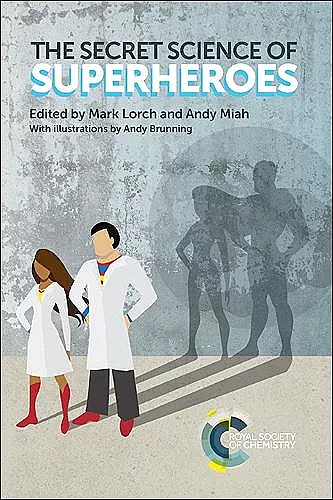The Secret Science of Superheroes
Mark Lorch editor Andy Miah editor
Format:Paperback
Publisher:Royal Society of Chemistry
Published:1st Aug '17
Should be back in stock very soon

Ever wondered what a superhero eats for breakfast? Do they need a special diet to feed their superpowers? The odd metabolisms of superheroes must mean they have strange dietary needs, from the high calorie diets to fuel flaming bodies and super speeds, to not so obvious requirements for vitamins and minerals.
The Secret Science of Superheroes looks at the underpinning chemistry, physics and biology needed for their superpowers. Individual chapters look at synthesising elements on demand, genetic evolution and what superhero suits could be made of. By exploring these topics, the book introduces a wide range of scientific concepts, from protein chemistry to particle physics for a general scientifically interested audience.
With contributions from leading science communicators the book hopes to answer some of these important questions rather than debunk or pick holes in the science of superheroes.
Cover-to-cover, the book is short and sweet, an experience populated with quintessential superheroes and comic history (the authors’ knowledge is impressive). It introduces a wide range of topics that can captivate a diverse range of readers — from those with general science knowledge to comic book and film enthusiasts. What I enjoyed most about this book was how well it made difficult concepts understandable.
* Nature Reviews Chemistry, Volume 1, 2017, Article Number 0089 *The secret science of superheroes is fun, engaging and suitable for superhero fans of any level.
* Chemistry World, December 2017 *The Secret Science of Superheroes is quite possibly the best book I have read that uses science fiction as a vehicle for science fact.
* Physics World, November 2017 *I found this book very inspirational - I do not think that there are many books that join fundamental science and popular fiction in such an engaging way! [A]n illustration of the fact that serious subjects can be explained in a fascinatingly clear way to which broader audience can easily relate.
* Darja LavõgiISBN: 9781782624875
Dimensions: unknown
Weight: 374g
248 pages